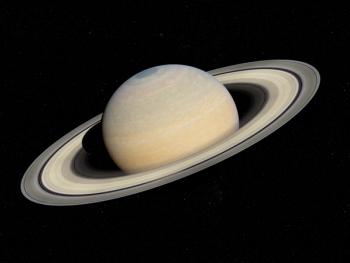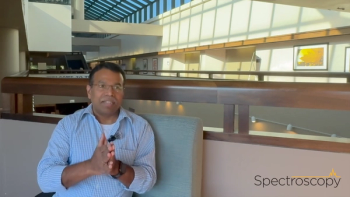Key Points
- Hydrosat and ABB are expanding their partnership with the upcoming launch of a second infrared camera aboard the VanZyl-2 satellite in summer 2025, following the successful deployment of VanZyl-1, which delivers high-resolution thermal imagery to monitor crop water stress and guide irrigation decisions.
- VanZyl-1’s ABB-manufactured IR sensor can detect temperature variations of less than 0.1 °C from orbit, enabling near-real-time analysis of soil and plant conditions.
- Beyond agriculture, the IR imaging technology developed through this collaboration can be used to monitor vegetation health, detect industrial heat output and night-time ship movements, and track deforestation.
Earlier this month, ABB and Hydrosat announced an expansion of their partnership by launching the second infrared (IR) camera that will go aboard Hydrosat’s VanZyl-2 satellite, which is scheduled for summer 2025 (1). This news comes following the successful deployment and operation of the first ABB-manufactured IR sensor aboard Hydrosat’s VanZyl-1 satellite, which took off back in 2024 (1).
The VanZyl-1 satellite is being used to address key limitations in current land surface temperature data by providing frequent, high-resolution thermal imagery (2). It detects early signs of crop water stress by monitoring changes in evapotranspiration, which is the process by which water evaporates from soil and is used by plants (2). This near-real-time data empowers growers and policymakers to make timely, informed decisions to protect crop yields (2).
“With VanZyl-1, Hydrosat can deliver real time insights into agricultural water use and plant stress anywhere in the world,” Pieter Fossel, co-founder and CEO of Hydrosat, said in a statement on the company website (2). “Our data improves agricultural productivity by providing more frequent thermal observations, showing growers exactly when and where their fields need water, helping them maximize yields while using less water and lowering their electricity bill.”
The VanZyl-1 satellite contains a proprietary ABB infrared camera capable of detecting minute temperature variations of less than 0.1 °C from an altitude of 500 kilometers (1). According to the company, the camera is designed to deliver accurate thermal imaging data rapidly to allow private stakeholders and governments to monitor soil temperature.
Hydrosat is a U.S.-based company based in Washington D.C. and Carlsbad, California (2). They use satellite-based thermal IR data and artificial intelligence (AI) to examine some of the more global challenges, such as food insecurity, drought response, and sustainable water management (1). Their collaboration with ABB showcases an improvement in IR thermal imaging in agriculture.
“ABB has been a trusted partner, fully committed to advancing our mission of delivering daily, high-resolution thermal infrared data with global coverage,” said Scott Soenen, Chief Technology Officer of Hydrosat, in a press release (1). “The ABB team’s expertise and the exceptional quality of the optical payload craftsmanship are critical to Hydrosat’s success in achieving this goal.”
One of the ongoing trends in the agriculture industry currently is using IR thermal imaging to monitor soil health and composition. Now that the technology has improved, satellite solutions now have better resolution and frequency that are able to detect changes in field temperatures caused by water stress (1). The VanZyl-1 and its younger counterpart, VanZyl-2, are examples of this improved technology.
There are other implications for this collaboration between ABB and Hydrosat. For example, the technology being put forward by Hydrosat can also monitor vegetation health, track industrial heat output, detect night-time ship movements, and identify recent deforestation linked to infrastructure expansion (1). As a result, this technology can be utilized in many real-world applications, so its wider adoption can be expected.
Meanwhile, ABB’s collaboration with Hydrosat highlights the company’s focus on IR sensing. The technology powering the Hydrosat cameras has its origins in ABB’s work on the MOPITT instrument aboard NASA’s Terra satellite, launched in 1999 (1). These same capabilities are now being adapted to serve private space missions (1).
“ABB is committed to the conservation and smart use of water as an essential resource for sustainable societies,” said Jacques Mulbert, President of ABB’s Measurement & Analytics division, in a press release (1). “Water touches every aspect of our lives in countless agricultural, industrial and domestic ways. With this project, ABB is advancing its goal of supporting sustainable development from space.”
This collaboration between ABB and Hydrosat is a component to ABB’s “Engineered to Outrun” mission, which is to improve sustainability through the integration of engineering and digitalization (1).
References
- ABB, ABB Infrared Camera on Hydrosat Satellite Delivers Strong Results and is Set to Enhance Water Scarcity Insights with Next Launch. ABB.com. Available at: https://new.abb.com/news/detail/127023/abb-infrared-camera-on-hydrosat-satellite-delivers-strong-results-and-is-set-to-enhance-water-scarcity-insights-with-next-launch (accessed 2025-06-24).
- Hydrosat, Hydrosat Drives Agricultural Productivity with Thermal Imagery from VanZyl-1. Hydrosat.com. Available at: https://hydrosat.com/2025/03/25/hydrosat-drives-agricultural-productivity-with-thermal-imagery-from-vanzyl-1-2/ (accessed 2025-06-24).






